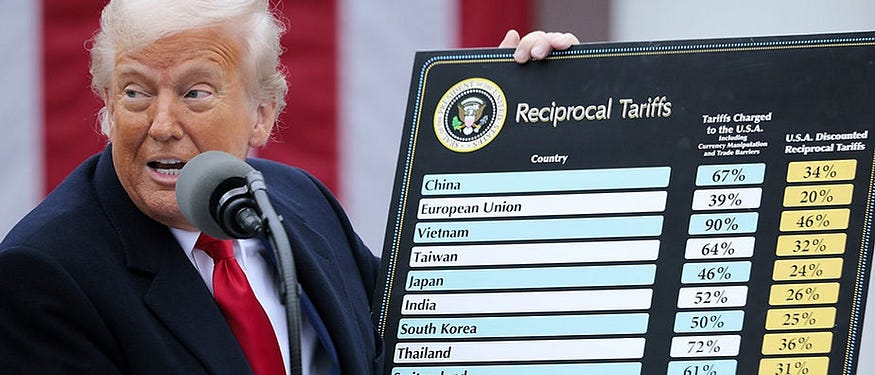Who Is Vladimir Vladimirovich Putin?
Discover Vladimir Putin’s journey from modest origins to a polarizing global leader. Uncover his rise, reforms, and private life — Read on!

This post can be read in Tocsin Magazine, and all Medium members can read the full article here.
Introduction
Few figures combine versatility and enigma quite like Vladimir Vladimirovich Putin. Whether piloting a fighter jet, touring a submarine, riding a tank, horseback riding, swimming in a cold river, shooting from a Kalashnikov, or engaging in barehanded combat against multiple foes, the images attributed to him are as diverse as they are dramatic.
At the same time, he negotiates with world leaders, oversees Russia’s nuclear force, directs “special operations in Ukraine,” and even speaks on the phone with U.S. President Donald Trump.
But who really is Vladimir Vladimirovich Putin?
Some label him the “Russian James Bond,” while others condemn him as a tyrant and autocrat who ignores Western criticism. For some, he is a hero who has restored a once-devastated Mother Russia to superpower status. Despite the pervasive mystery, few truly know the man behind the myth — a fact the Kremlin has guarded closely, ensuring that his image on the world stage remains impeccable.
Who is Putin Really?
Vladimir Vladimirovich Putin, a prominent Russian politician, was born on October 7, 1952, in what is now Saint Petersburg. He is the current President of the Russian Federation and holds one of the longest tenures in this role, comparable only to figures such as Joseph Stalin.
In his most recent election, he reportedly received support from around 87% of voters — a record figure within modern Russian politics, though such statistics are often met with skepticism outside the country’s tightly controlled electoral system.
Putin first assumed the presidency in 2000 by succeeding Boris Yeltsin. Following a period as Prime Minister, he returned to the presidential office and continues to hold significant influence in Russia and on the global stage.
Little is publicly known about his early life, save for the fact that he grew up in modest circumstances. He and his family once lived in a cramped, worn-down apartment, shared with two other families for two decades, with few comforts.
Rumor even suggests that his grandfather once served as a personal cook for both Lenin and Stalin. Media reports have described his childhood home as dilapidated, lacking even a proper bathtub, while the only restroom was tucked away in a closet beneath a staircase.
As a child, at his father’s insistence, Putin trained in boxing and visited a gym, though a broken nose soon led him to focus on Sambo — a martial art blending elements of judo and wrestling. Excelling in Sambo, he not only developed valuable self-defense skills but also built a network of friends, many of whom remain in contact with him today.
Putin went on to earn a law degree from Leningrad State University in 1975. During his studies, he was noticed by the KGB and was later recruited for counterintelligence training. Initially assigned to the “Second Department,” he was eventually transferred to the “First Department,” where his role involved monitoring foreigners and diplomatic personnel in Leningrad.
Unconfirmed accounts claim that while working for the KGB, he was known by the pseudonym “Drug Platov.” His analytical skills reportedly earned top marks during his spy training, though his personal character was often criticized. Between 1985 and 1990, Putin was stationed in the former East Germany. Notably, some media reports recall an incident in Dresden in 1989, when he is said to have single-handedly defended the KGB building against demonstrators.
The Political Rise
After his assignment in Germany, Putin returned to what was then the Soviet Union in 1990. He began working at Leningrad State University and simultaneously launched his political career.
Over the following years, he held several positions, including head of the International Committee at the Saint Petersburg Mayor’s Office and later serving as first deputy director of President Boris Yeltsin’s administration.
The turning point came in 1998–1999 when he was appointed head of the Federal Security Service (FSB) — one of the KGB’s successors. In this role, he quickly emerged as one of the most powerful figures in both Moscow and Russia at large.
Soon after, Yeltsin offered him the premiership, and following Yeltsin’s sudden resignation, Putin became acting president. In the May 2000 presidential elections, he won in the first round, paving the way for a longstanding political legacy.
Russia as a Resurgent Power
A key aspect of Putin’s legacy is his contribution to Russia’s resurgence as a global power. Under his leadership, Russia has made significant strides in restoring its political and military might.
His focus on modernizing the armed forces has brought the Russian military into the 21st century, enhancing its arsenal with state-of-the-art equipment.
Adopting an autocratic, tough-love approach, Putin has elevated Russia on many fronts, even as oligarchs who once plundered the country were forced to either align with or exit his regime.
His decisive actions in conflicts such as the Chechen wars and his firm stance against terrorism have earned him widespread support among many Russians, solidifying his standing as one of the nation’s most influential leaders.

Putin’s Private Life
Much like his public persona, Putin’s private life is shrouded in secrecy. He was previously married to Lyudmila, with whom he shared 30 years of marriage and had two daughters, Maria and Yekaterina, before divorcing. Rumors of a subsequent relationship surfaced in 2008, involving Alina Kabaeva — a gymnast more than 30 years his junior — who is rumored, albeit unconfirmed, to have given birth to his son in a private clinic in Switzerland in 2015.
Over the years, various unverified connections with other celebrities have also been the subject of speculation.
Known to be an animal lover, Putin reportedly has a fondness for Siberian tigers and keeps a female black Labrador retriever named Koni as his pet.
According to media sources, he reportedly avoids eating at banquets out of fear of poisoning and is extremely cautious about health protocols. He is terrified of COVID-19, so meetings in the Kremlin take place at a 10-meter table, where Putin sits at the head, and the guests are far away from him.
His office is said to contain little modern technology; communications reportedly take place via old analog phones, and despite his stature, he maintains a rigorous physical regimen by lifting weights, exercising, and swimming regularly.
Conclusion
This portrait of Vladimir Vladimirovich Putin presents a leader who is as polarizing as he is influential. For some, he is a tyrant and an aggressor, as seen in conflicts like that in Ukraine; for others, he is a heroic savior who has restored Russia’s proud position on the world stage.
Despite the controversies surrounding his domestic policies and international actions, a majority of Russians continue to rally behind him — a fact reflected in election outcomes. Ultimately, whether one views him as an authoritarian despot or a steadfast patriot depends on one’s perspective.
This article aims to provide insight into his complex character and legacy, leaving it to readers to form their own opinions.
https://cryptonftworlds.blogspot.com/2025/04/forbes-publishes-list-of-biggest-losers.html

Feel free to contact me if you need a writer
If you want to support my work, buy me a coffee for $1 by clicking the link below. This is a small amount for you, but this means a lot to me!
Greetings, and until my next article!
Neo77















